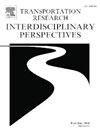一个用于综合移动数据和评估预测神经网络的因果干预框架
IF 3.8
Q2 TRANSPORTATION
Transportation Research Interdisciplinary Perspectives
Pub Date : 2025-05-01
DOI:10.1016/j.trip.2025.101398
引用次数: 0
摘要
深度神经网络越来越多地应用于移动性预测任务,但其复杂的内部工作对可解释性提出了挑战,特别是在理解移动性行为的各个方面如何影响预测方面。本研究引入了一个因果干预框架来评估移动性相关因素对神经网络下一个位置预测的影响。下一个位置预测是一项专注于预测个体下一个位置的任务。为了实现这一目标,我们采用个体移动模型来合成位置访问序列,并通过干预其数据生成过程来控制行为动态。我们使用移动性指标评估介入定位序列,并将其输入训练有素的网络以分析性能变化。结果表明,该方法可以有效地生成具有不同移动行为的位置序列,从而促进了对多样而真实的时空变化的模拟。这些变化导致下一个位置预测网络的性能波动,揭示了关键移动行为因素的影响,包括位置转换的顺序模式,探索新位置的倾向,以及群体和个人层面上的位置选择偏好。所获得的见解对移动性预测网络的实际应用具有价值,并且该框架有望促进因果推理的使用,以增强移动性应用中神经网络的可解释性和鲁棒性。本文章由计算机程序翻译,如有差异,请以英文原文为准。
A causal intervention framework for synthesizing mobility data and evaluating predictive neural networks
Deep neural networks are increasingly utilized in mobility prediction tasks, yet their intricate internal workings pose challenges for interpretability, especially in comprehending how various aspects of mobility behavior affect predictions. This study introduces a causal intervention framework to assess the impact of mobility-related factors on neural networks designed for next location prediction — a task focusing on predicting the immediate next location of an individual. To achieve this, we employ individual mobility models to synthesize location visit sequences and control behavior dynamics by intervening in their data generation process. We evaluate the interventional location sequences using mobility metrics and input them into well-trained networks to analyze performance variations. The results demonstrate the effectiveness in producing location sequences with distinct mobility behaviors, thereby facilitating the simulation of diverse yet realistic spatial and temporal changes. These changes result in performance fluctuations in next location prediction networks, revealing impacts of critical mobility behavior factors, including sequential patterns in location transitions, proclivity for exploring new locations, and preferences in location choices at population and individual levels. The gained insights hold value for the real-world application of mobility prediction networks, and the framework is expected to promote the use of causal inference to enhance the interpretability and robustness of neural networks in mobility applications.
求助全文
通过发布文献求助,成功后即可免费获取论文全文。
去求助
来源期刊

Transportation Research Interdisciplinary Perspectives
Engineering-Automotive Engineering
CiteScore
12.90
自引率
0.00%
发文量
185
审稿时长
22 weeks
 求助内容:
求助内容: 应助结果提醒方式:
应助结果提醒方式:


